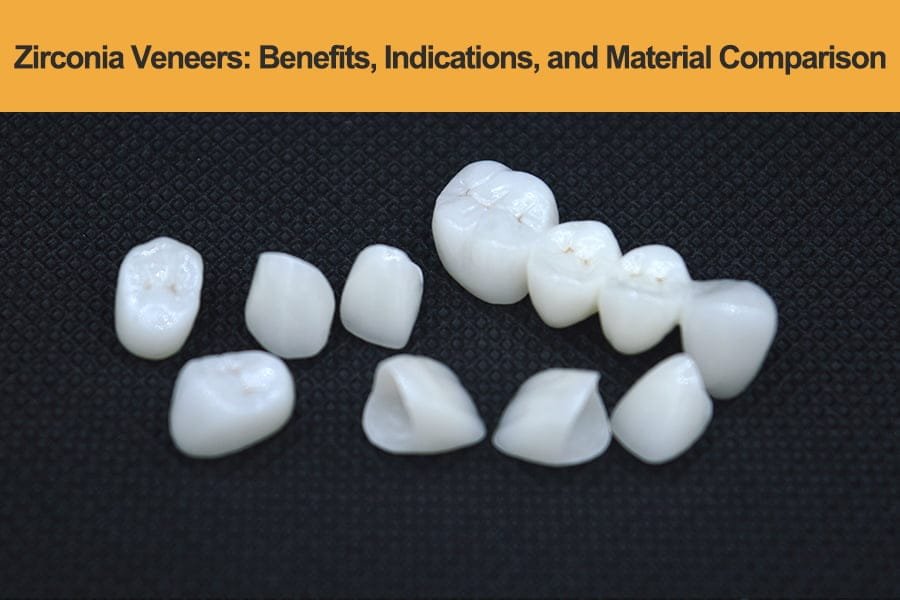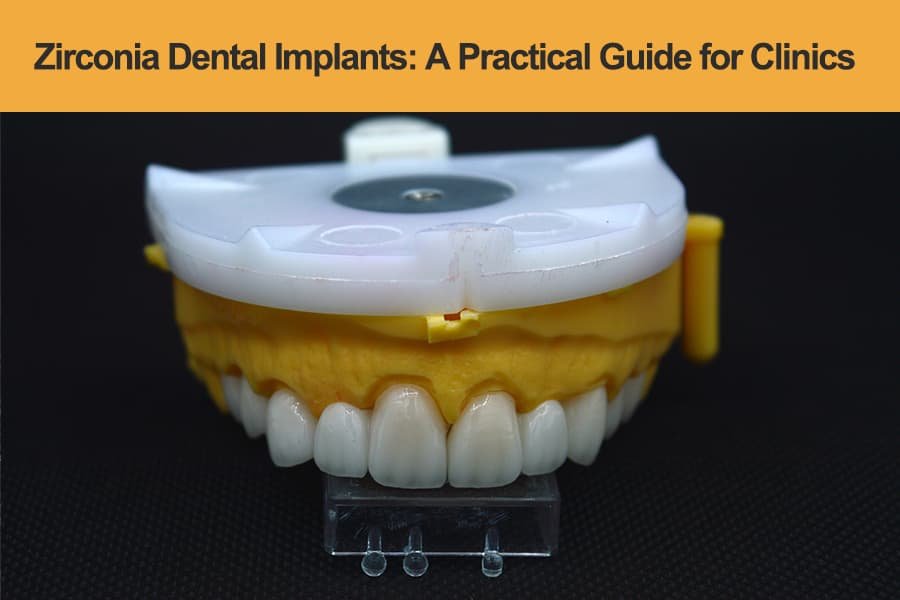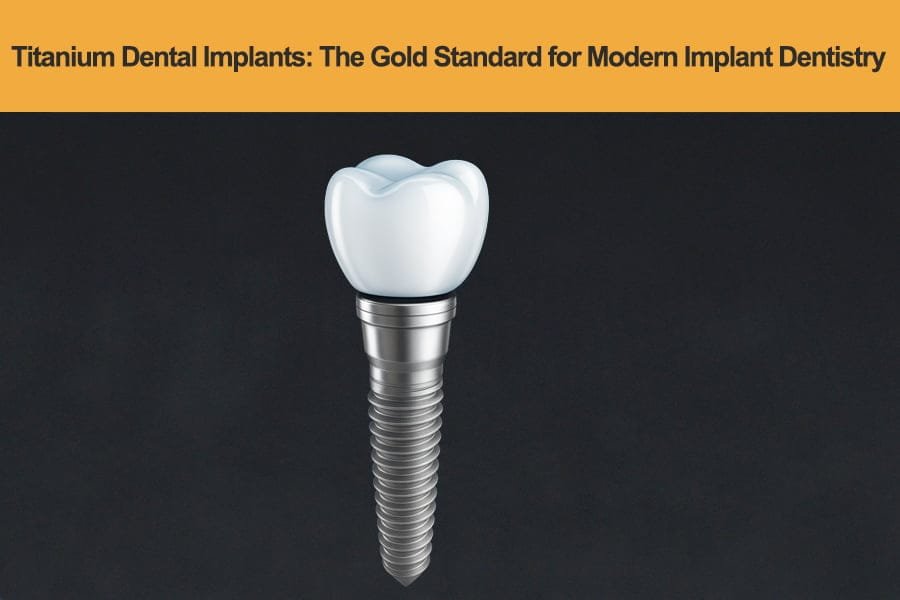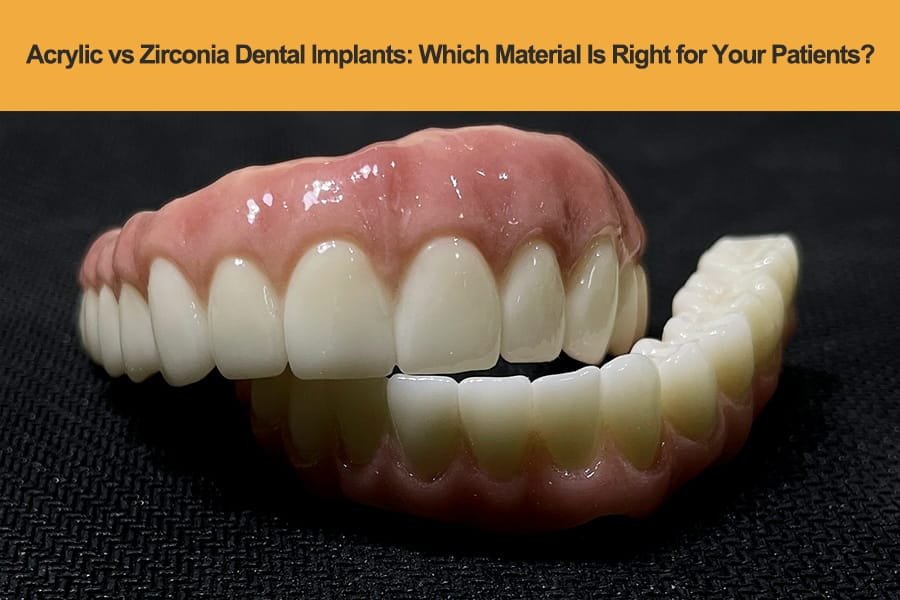
Introduction
Choosing the right material for a dental implant restoration is one of the most important steps in treatment planning. The material affects how strong the restoration will be, how it looks in the mouth, and how long it will last.
Today, acrylic and zirconia are two of the most common materials used for implant-supported restorations. Each has clear advantages depending on the patient’s needs and budget.
Acrylic restorations are made from a special plastic resin (PMMA). They are lightweight, easier to repair, and more affordable. That’s why dentists often use them for temporary or full-arch restorations when flexibility and cost control are key.
Zirconia restorations, on the other hand, are made from a strong ceramic material. They look more natural, are extremely durable, and resist stains or wear for many years. These features make zirconia a popular choice for long-term and high-esthetic cases.
At SF Dental Lab, we work with both acrylic and zirconia implant restorations. Our dental technicians help clinics and doctors choose the best material for each case—balancing strength, esthetics, and budget to achieve excellent results for every patient.
Overview of Acrylic and Zirconia Dental Implants
What Are Acrylic Implants?
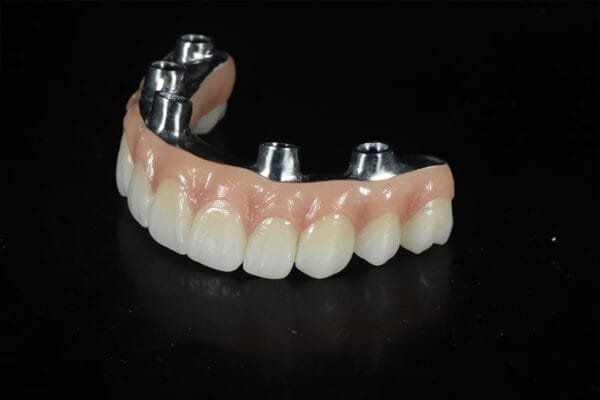
Acrylic implant restorations are made from PMMA (polymethyl methacrylate) or other advanced dental resins. They are often used for All-on-4 or All-on-6 full-arch restorations because they are lightweight, affordable, and easy to adjust.
An acrylic restoration usually includes:
- A titanium or metal substructure for support
- A layer of acrylic teeth and gums on top for shape and color
Dentists often choose acrylic for temporary or transitional restorations, or for patients who want a more budget-friendly option. Repairs and relining can be done quickly if any part becomes worn or damaged, which makes it a practical material for many clinical situations.
What Are Zirconia Implants?
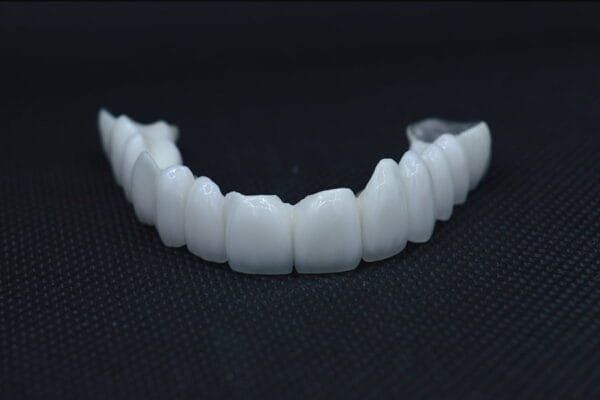
Zirconia restorations are made from zirconium dioxide (ZrO₂), a type of high-strength ceramic. They are designed using CAD/CAM technology and milled from solid zirconia blocks, giving them excellent precision and consistency.
Zirconia is known for its:
- High strength and fracture resistance
- Natural tooth-like color and translucency
- Biocompatibility, meaning it’s gentle on gums and tissue
These qualities make zirconia an excellent choice for long-term, esthetic restorations, especially in visible areas such as the front teeth. It’s also ideal for patients who prefer metal-free dental solutions.
Key Differences Between Acrylic and Zirconia Restorations
Acrylic and zirconia are both popular choices for implant restorations, but they perform very differently in terms of strength, appearance, and cost. Understanding these differences helps dentists and labs choose the most suitable option for each patient.
Here’s a simple comparison:
| Feature | Acrylic Restorations | Zirconia Restorations |
| Material Type | Plastic resin (PMMA) over a metal base | Solid ceramic (zirconium dioxide) |
| Strength & Durability | Moderate strength, may wear over time | Very high strength and long lifespan |
| Appearance | Natural-looking at first but can discolor | Excellent esthetics and color stability |
| Weight | Light and comfortable | Heavier and more solid |
| Repairability | Easy to repair or reline | Difficult to repair if damaged |
| Longevity | Lasts around 3–5 years | Can last 10 years or more |
| Cost | Lower initial cost | Higher initial cost but longer life |
| Noise / Feel | Softer chewing feel | Feels more like natural teeth |
In short, acrylic restorations are ideal for temporary or cost-sensitive cases, while zirconia restorations are better suited for long-term, high-strength, and esthetic results.
Clinical Indications – When to Choose Each
Both acrylic and zirconia have their own advantages. The right choice depends on the patient’s needs, the clinical situation, and the treatment goal.
When to Choose Acrylic Restorations
Acrylic is a smart option when flexibility and affordability are important.
You might choose acrylic restorations for these situations:
- Provisional or temporary restorations – Ideal for healing stages or test phases before final restorations.
- Full-arch cases (All-on-4 / All-on-6) – Lightweight and easier to adjust during fitting.
- Budget-friendly treatment plans – Lower material and production costs help control expenses.
- Easy maintenance and repairs – Cracks or worn teeth can often be repaired directly at the clinic.
Acrylic restorations allow patients to experience full-arch function and esthetics at a reasonable cost before investing in a long-term zirconia solution.
When to Choose Zirconia Restorations
Zirconia restorations are designed for long-term strength and beauty.
They are often recommended in these cases:
- Permanent implant restorations – Excellent for single implants or full-arch final restorations.
- High esthetic demands – Natural color and shine make zirconia ideal for visible areas.
- Strong bite force patients – Great durability and resistance to chipping.
- Metal-free preferences – Perfect for patients sensitive to metal or seeking holistic treatments.
Zirconia restorations offer a long-lasting, lifelike look with minimal maintenance—ideal for patients who want premium quality and longevity.
Patient Experience & Maintenance
How a restoration feels, looks, and performs in daily life is just as important as how it’s made. Acrylic and zirconia restorations create very different experiences for patients in terms of comfort, maintenance, and long-term care.
Comfort and Chewing Feel
- Acrylic restorations are lighter and have a slightly softer chewing feel. Many patients describe them as more cushioned, especially during the early adaptation phase.
- Zirconia restorations feel denser and more natural—closer to real teeth. Because of their hardness, they transmit bite forces more directly, which helps improve chewing efficiency.
Hygiene and Cleaning
- Acrylic surfaces are more porous, which means they can absorb stains or collect plaque if not cleaned regularly. Patients should use gentle brushes and cleaning tablets to keep them fresh.
- Zirconia surfaces are smoother and resist plaque buildup. They are easier to clean and stay brighter over time, which helps maintain gum health and esthetics.
Maintenance and Longevity
- Acrylic may require more frequent polishing, relining, or replacement due to wear or discoloration.
- Zirconia restorations, by contrast, need little maintenance. With proper hygiene and regular checkups, they can last for many years without significant change.
Overall Patient Experience
Acrylic restorations are comfortable, light, and easy to repair—perfect for transitional or cost-sensitive cases. Zirconia restorations deliver a more natural and permanent solution with superior comfort and durability.
From a Dental Lab Perspective – Production & Quality Control

At SF Dental Lab, we handle both acrylic and zirconia implant restorations every day. Each material requires different production methods and quality control steps to achieve the best results for both function and esthetics.
Acrylic Restoration Process
Acrylic restorations are crafted using CAD/CAM design combined with traditional layering techniques.
Here’s how we make them:
- Digital design – The case is scanned and designed to match the implant positions and occlusion.
- Metal framework fabrication – A titanium or chrome-cobalt base is milled or printed for strength.
- Acrylic buildup – PMMA or hybrid resin is layered and bonded to the framework.
- Polishing and finishing – Surfaces are polished to ensure comfort and natural gum appearance.
Acrylic’s flexibility allows easy chairside adjustments and repairs, making it ideal for provisional or adaptable restorations.
Zirconia Restoration Process
Zirconia restorations demand higher precision and advanced equipment.
Our workflow includes:
- 3D digital modeling – CAD/CAM software is used for detailed design and bite simulation.
- Milling – Restorations are milled from solid zirconia blocks for maximum strength.
- Sintering – High-temperature sintering enhances density and durability.
- Coloring and glazing – Layers are customized for natural shading and esthetics.
- Final inspection – Each restoration is checked for fit accuracy, occlusion, and finish before delivery.
This controlled process ensures consistent results and long-lasting restorations that meet the expectations of both dentists and patients.
Our Quality Commitment
Every restoration from SF Dental Lab goes through strict inspection and documentation at each stage.
We focus on:
- Accurate fit for multi-unit implant frameworks
- Natural esthetics and surface finish
- Strong bonding and long-term stability
With years of experience as a dental lab in China, we provide reliable solutions that combine advanced technology with skilled craftsmanship.
Cost vs Longevity: Finding the Balance
When choosing between acrylic and zirconia restorations, cost is always an important factor. But it’s equally important to think about how long each material will last and how much maintenance it may require over time.
Initial Cost
- Acrylic restorations have a lower upfront cost, making them an affordable option for temporary or cost-sensitive cases.
- Zirconia restorations are more expensive initially because of the material cost and advanced milling process.
However, the higher price of zirconia often reflects its superior durability and long-term value.
Maintenance and Replacement
- Acrylic may need regular maintenance such as relining, polishing, or occasional repairs. These costs can add up over several years.
- Zirconia, on the other hand, requires very little maintenance. Its smooth, hard surface resists wear and staining, helping it stay in great condition for a decade or more.
Over time, zirconia can actually become the more economical choice, since it rarely needs replacement.
Balancing Cost and Longevity
For patients with limited budgets or those needing a temporary solution, acrylic remains a good choice.
For patients seeking long-term performance and esthetics, zirconia offers excellent value through strength, beauty, and reliability.
At SF Dental Lab, we help our clients evaluate both short-term and long-term costs to recommend the most suitable option for each case.
Conclusion
Choosing between acrylic and zirconia dental implants comes down to balancing each patient’s clinical and financial needs.
Acrylic restorations provide flexibility, comfort, and affordability—perfect for temporary or transitional implant cases. They’re easy to repair and adjust, making them a practical choice during healing or testing phases.
Zirconia restorations, by contrast, deliver exceptional strength, beauty, and long-term stability. They’re ideal for final restorations where durability and esthetics are the top priorities.
Both materials have a place in modern implant dentistry. The key is selecting the right one for each situation.
At SF Dental Lab, we combine advanced digital design, precise milling, and skilled craftsmanship to create both acrylic and zirconia implant restorations. Our goal is to help dental professionals deliver predictable, long-lasting, and natural-looking results for their patients worldwide.
Need expert support for your next implant case?
👉 Contact SF Dental Lab – your trusted dental implant lab partner for precision, quality, and care.

